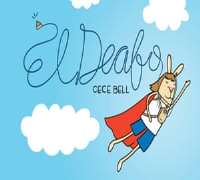

In expository writing courses, careful positioning of the narrating voice finds itself-even to a skeptic of its utility in the composition classroom (b) discussion of whether disability is “a good difference” (c) considering El Deafo and “the material dimensions of composing” expository essays on disability (d) working with “See what I’m saying” in visual presentations of shared discourse about multimodal texts (e) using “Save me!” from “becoming hearing” and (f) learning about textual reviewing, re-purposing, and reframing. This essay includes discussion of first-year writers (a) finding the narrator in Cece Bell’s El Deafo.

The structure of the joke helps students access a text-based analysis: What is the joke? Who is telling it? To whom? Why? The visual presentation of the “A-T-T-I-C” page illustration underscores Cece’s affiliation with Martha, while also making important points about language, rhetoric and discourse, and the way the comics genre presents and complicates the burgeoning “voice” of its deaf narrator.

As a comic, El Deafo’s form strongly influences the interplay between friendship and disability. When taught alongside supporting American Sign Language (ASL) texts in translation from contemporary American Deaf Culture, El Deafo offers an opportunity to expose readers and writers to a variety of experiences of d/Deafness and disability. The novel’s plot follows the character Cece Bell, starting when meningitis deafens her at age four. Language, rhetoric, discourse, and voice are critical to Cece Bell’s El Deafo (2014), an autobiographical graphic novel detailing d/Deaf experience and aimed at a middle-grade audience, ages 7-12.


 0 kommentar(er)
0 kommentar(er)
